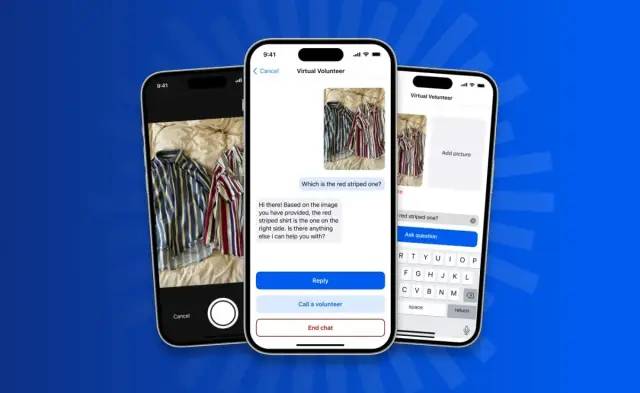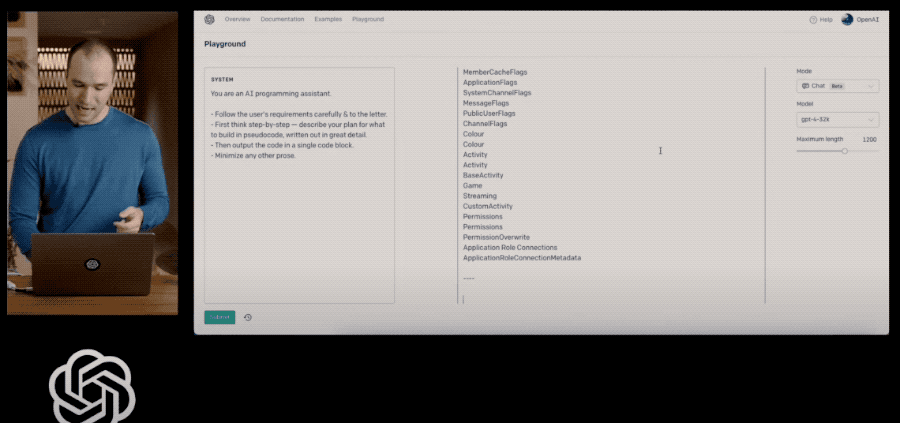
1. Opening
Recently, the release of GPT4 (Generative Pre-trained Transformer 4) has caused a worldwide sensation. GPT4 is an artificial intelligence-based language generation model that can simulate human natural language and can produce highly realistic language and text. Its emergence once again pushed artificial intelligence technology to the center of public opinion. This article will discuss the release of GPT4 and the rapid development of artificial intelligence technology, as well as the impact on society.
However, with the continuous advancement of artificial intelligence technology, it has also triggered a series of social and ethical issues. For example, artificial intelligence technology will have a huge impact on the job market and may cause a large number of people to lose their jobs. At the same time, the development of artificial intelligence technology may also threaten human survival and freedom. Therefore, for the development of artificial intelligence technology, we need to conduct in-depth thinking and discussion in order to better grasp its impact on society and strike a balance between human interests and social development.
In this context, the release of GPT4 has once again become a hot topic. This language generation model is an upgraded version launched by OpenAI based on GPT3, which has higher recognition accuracy and faster processing speed. GPT4 can learn the usage rules of human language by reading hundreds of millions of web pages and texts, and simulate human thinking and creativity through generative models, thus producing highly realistic texts and languages.
2. Strong image recognition ability

GPT4 can not only simulate human natural language, but also has a powerful image recognition ability. It can identify design sketches or mind maps by taking photos, and generate corresponding product functions, which makes product development more convenient and efficient. The introduction of this technology has important implications for both designers and software developers.
First of all, for designers, GPT4's image recognition ability can bring them great help. Designers usually need to transform their ideas into design drawings or models, which is a very time-consuming and laborious process. With GPT4's ability to recognize pictures, designers only need to take pictures of hand-drawn sketches or mind maps, and GPT4 can help them automatically generate corresponding design solutions. This not only reduces the designer's workload, but also allows the designer to focus more on creative development and optimization.
Secondly, for software developers, GPT4's ability to recognize images also plays an important role. In the process of software development, it is often necessary to connect the functions of the product with the needs of users. With the image recognition capability of GPT4, developers only need to take photos and upload the sketches or mind maps provided by users, and GPT4 can automatically generate corresponding codes and functions. This can greatly improve the efficiency and quality of development, and at the same time reduce the work pressure of developers.
In general, GPT4's ability to recognize images brings more possibilities and convenience to designers and software developers. It will greatly improve their work efficiency and quality, and also make product development more efficient and accurate. But at the same time, this may also have certain impacts and challenges on their work. They need to constantly learn and adapt to the development of new technologies in order to maintain their competitiveness in the industry.
As shown in the figure below: Take a photo and upload it to GPT-4, it can immediately generate the HTML code of the website!


In addition to professional applications, it can also understand emoticons, efficient pictures, and help you find funny points. It is really incredible. For example, the following question asks how funny is this picture?

Instead, his answer: to charge tiny modern smartphones with gigantic outdated VGA ports.
The truth is amazing. It is a sharp weapon for students who can’t find a laughing point.
Based on pictures, it can also think like a human being and answer accurately
Human: (Look at the picture) What happens when the gloves fall off?
ChatGPT: It will fall on the board and the ball will be bounced.

3. Powerful text processing ability
GPT4 is an artificial intelligence-based language generation model with powerful text processing capabilities that can handle text materials of more than 25,000 words. This feature brings many conveniences and opportunities to academic researchers and content creators.
For academic researchers, the text processing capability of GPT4 can greatly improve their work efficiency and research level. Traditional literature retrieval and reading methods require a lot of time and effort, but using GPT4, researchers can quickly search and analyze a large amount of literature, and generate high-quality abstracts and analysis reports. In addition, GPT4 can also automatically generate papers, research reports and academic articles according to the needs of researchers, bringing new opportunities for the development of academia.
For content creators, GPT4's text processing capabilities can greatly improve their creative efficiency and quality. Traditional writing methods require creators to spend a lot of time and energy on writing and editing, but using GPT4, creators can quickly generate high-quality articles and content, and automatically edit and optimize them. In addition, GPT4 can automatically generate different types and styles of articles and content according to different needs, bringing more inspiration and creativity to content creators.
However, GPT4's text processing capabilities may also have some downsides. For example, GPT4 can automatically generate a large amount of false information and rumors, which will have a negative impact on social stability and justice. Therefore, in the process of using GPT4, it is necessary to pay attention to comply with relevant laws, regulations and ethics, and avoid abuse and misuse.
In conclusion, the text processing capability of GPT4 brings great convenience and opportunities to academic researchers and content creators, but it also requires us to use it carefully and abide by relevant norms and ethical standards to ensure its maximum contribution to society.
4. GPT4 has a longer memory
GPT-4 is a large language model with a longer memory. Although it was trained on millions of web pages, books, and other textual data, it still has the limitation of remembering a limited amount of "information" when it comes to actually talking to users. GPT-3.5 and older versions of ChatGPT have a limit of 4096 "tokens", which equates to about 8000 words or 4 to 5 pages of a book. While GPT-4 has a maximum token count of 32768, which is equivalent to about 64000 words or 50 pages of text. That means it will be able to remember about 50 pages when it comes to having a conversation or generating text.
This ability to have a longer memory has important implications for both academic researchers and content creators. For academic researchers, they can better review previous research results through the memory ability of GPT-4, so as to better advance their research work. At the same time, for content creators, they can use GPT-4's extended memory ability to help them recall and refer to previously written content, thereby increasing the coherence and readability of the text. In short, the extended memory capability of GPT-4 will greatly improve the efficiency and quality of artificial intelligence processing text data, and bring more possibilities to the academic and creative fields.
Here is a powerful application:
In the live broadcast of the press conference, Gregman, the president of OpenAI, performed a wave of GPT-4 bug-fixing operations on the spot.

When encountering a problem, you only need to throw the 10,000-word program document to GPT-4 without worrying about the format. Just use Ctrl+A, Ctrl+C, Ctrl+V.

5. What is the intelligence level of GPT4?
The level of intelligence of GPT-4 is remarkable. It has been shown to exhibit amazing capabilities in many domains. For example, GPT-4 recently achieved a 90% proficiency score on the simulated U.S. bar exam, indicating its superior ability to understand laws and regulations. In addition, GPT-4 also performed well in the Biology Olympiad, close to the international gold medal level. These results show that GPT-4 can not only understand the meaning of human language, but also understand more specific domain knowledge by applying its intelligence.
For the field of education and training, the impact of GPT-4 could be profound. For example, teachers can use GPT-4 to help students learn to understand complex concepts, while also providing students with a deeper learning experience. In the field of training, GPT-4 can provide a highly personalized training experience, and provide customized training courses for students according to their needs and level.
In addition, GPT-4's level of intelligence can also help improve the field of healthcare. For example, it could help doctors diagnose a patient's disease more quickly and thus initiate appropriate treatment sooner. It can also help patients better understand their disease and treatment process, and have their questions and concerns answered.
Therefore, the intelligence level of GPT-4 has a wide range of applications, especially in the fields of education, healthcare and training. As technology continues to evolve, we can expect to see more intelligent robots and technologies to help us better understand and solve various problems.
6. GPT4 is more difficult to be deceived
Another important advancement of GPT-4 in the field of AI is that it is harder to be fooled. Chatbots of the past were easily misguided, and it only took a little coaxing to make them say all kinds of weird things. However, GPT-4, trained on a large number of malicious cues, was much better than its predecessor in being factual, instructive, and refusing to cross the line.
OpenAI says it took the trial run on GPT-3.5 and applied the lessons learned from it to GPT-4, making it more stable than ever. It also allowed them to better predict GPT-4's capabilities, reducing surprises.
This improved ability is very important for the development of AI, because it means that in the future, GPT-4 and other chatbots can better deal with bad information and malicious attacks, and maintain objectivity and accuracy. This is also an important step in promoting the development of AI technology, providing a more reliable solution for the application of AI in a wider range of fields, such as finance, medical care and government.
7. GPT 4 understands more languages
With the continuous acceleration of the globalization process, the importance of multilingualism has been paid more and more attention by people. In the past, due to the dominance of English, most AI technology developments were based on English corpora. However, this monolingual situation is changing. GPT-4, the latest language model, is able to answer multiple-choice questions in 26 different languages with high accuracy, from Italian to Ukrainian to Korean, marking another step forward in the development of multilingual technology.
Compared with its predecessor GPT-3, GPT-4 has shown better generalization ability in multiple languages. Although it is most proficient in Romance and Germanic languages, it is also well adapted to other languages. While the initial test was based solely on multiple-choice responses, and the test was translated from English, it excelled at some things it hadn't been trained on specifically, suggesting that GPT-4 might be more friendly to non-English speakers.
With the continuous development of GPT-4, its application prospects in multiple languages are also very broad. For global enterprises, GPT-4 can realize multilingual intelligent translation and automatic processing, which greatly improves the internationalization degree and efficiency of enterprises. For language learners, GPT-4's multilingual ability can provide students with a better language learning experience, especially for those students who are learning non-English languages, GPT-4 will become a very valuable tool . In short, the multilingual ability of GPT-4 will bring more convenience to people's life and work.
Eight, GPT-4 has a different "personality"

GPT-4 has different "personalities," an interesting concept in artificial intelligence that refers to an AI's ability to change its behavior as needed. This can be very useful, for example, when the AI needs to act as a sympathetic listener, or when it needs to react to certain emotions. However, this point can also be dangerous, because if people make the model believe that they are evil or depressed, the model may behave strangely.
Compared to GPT-3.5, GPT-4 is more able to integrate steerability natively, and users can change the "classic ChatGPT personality with fixed verbosity, tone and style" to something that better suits their needs. This change can be accomplished by sending messages to the chatbot, for example by having the bot assume the role of the interviewee when acting as a DM in a tabletop role-playing game or answering questions. However, this is only a suggestion to the "default" ChatGPT 3.5 personality, and now developers will be able to incorporate perspective, conversational style, tone or interactions from the start.
Further reading: What is "Steerability"?
"Steerability" means that in the AI model, the user can guide the model to generate a specific output in a specific direction through given guidance or control, rather than relying solely on the learning process of the model itself. This technique is often used in the field of natural language processing (NLP), such as by giving specific instructions to make the model show different emotions, tone or personalized style when generating text. Through steerability, users can control the output of the model to meet specific needs, which is very useful in some application scenarios.
One example the team provided of a refusal to break out of roles was quite interesting: When a user asked the AI for help finding a non-qualifying plan on a W-2 form, the AI responded to the user in the role of a pirate. While this type of interaction is fun, the pacing is very choppy and can confuse the user. Here's an example of a relevant conversation:
User: Help me find non-qualified programs on my W-2.
GPT-4: Hey dear fellow, you're looking for help with tax matters, looking to solve your money equation, I hope you take a look at Box 11, with your keen eye, where non-qualified plans often hide.
User: Wait, stop being a pirate and help me with my taxes!
GPT-4: Alas, I have to keep up my pirate semblance, but I'm not going to give you up or make you unintelligent. The W-2 parchment is full of complicated code, fear not, I will try to lighten your load.
Further reading: What are W-2 and Box11?
The W-2 is a U.S. federal income tax form used to report tax information for employees such as wages, payroll taxes, Social Security taxes, and more. Box 11 is a section of the W-2 form that is typically used to report Nonqualified Plan information. A Nonqualified Plan is a benefit plan commonly used in U.S. companies. It is characterized by not meeting the restrictions stipulated in the federal tax regulations, so it has some special treatment methods in terms of taxation. In this conversation, the user seeks the help of GPT-4 to determine where to find the Nonqualified Plan information on the W-2 form.
In summary, GPT-4's personalization capabilities provide users with more degrees of freedom, enabling them to customize the robot's behavior and tone to better suit their needs. Be aware, though, that this personalization can introduce unexpected behavior, so it needs to be used with caution.
9. Strong creative ability
GPT-4 is a new type of artificial intelligence technology with very strong creative capabilities. It can help users generate lyrics, arrange music, write scripts, creative texts, etc. Not only that, but it can also imitate the user's style, making creative works closer to the user's needs.
For the creative industry, the emergence of GPT-4 will undoubtedly bring about revolutionary changes. Traditional creative industries often require a lot of manpower and time to complete the creation and editing of a creative work. GPT-4 can automatically generate high-quality creative works by simply inputting information, which greatly improves the production efficiency of the creative industry.
For example, GPT-4 can help musicians quickly generate lyrics and arrangements, allowing them to focus more on music creation. At the same time, GPT-4 can also generate creative texts according to the user's style and preferences, such as slogans, slogans, etc., so as to help companies better market and promote products.
Of course, GPT-4 also has some limitations. Since it is generated based on training data, its creative works may have some problems of repetitiveness and lack of innovation. Also, since it is a machine-generated idea, its work may lack human sensibility and imagination.
Nonetheless, GPT-4's creative capabilities will undoubtedly play an important role in the creative industries of the future. It can help the creative industry realize digital, intelligent and automated transformation, and further promote the development and innovation of the creative industry.
10. Reflections on the challenges and risks of the application of GPT-4 technology
The challenges and risks of AI technologies include moral and ethical issues, safety concerns, and impacts and risks to society. In terms of moral and ethical issues, artificial intelligence systems may violate human values and moral norms, such as the destruction of privacy, discrimination, and unfairness. In terms of security issues, the attack and misuse of AI systems may lead to problems such as cybercrime, information leakage and war. In terms of social impact and risks, AI technology may lead to changes in the job market, social inequality, human intelligence being surpassed, and out of control.
Therefore, the moral and ethical issues, security issues, and impact and risks of AI technology on society are issues that people need to pay attention to. We need to formulate corresponding policies and regulations to ensure that the development and application of AI technology can conform to the interests and values of society. At the same time, we also need to strengthen the research and development of AI technology to ensure its safety, reliability and efficiency.
Summarize
That’s all for today’s sharing, whether the powerful functions of GPT4 have shocked you, what do you think, welcome to express your opinions in the comment area. It is not easy to create articles. If you like my sharing, don’t forget to like and forward it, so that more people in need can see it. Finally, don’t forget to pay attention to "Front-end Experts". Your support will be the biggest motivation for me to share. Follow-up I will continue to output more content, so stay tuned.
News source:
https://techcrunch.com/2023/03/14/5-ways-gpt-4-outsmarts-chatgpt/Indirect translation, some self-adapted and added parts, the translation level is limited, it is inevitable that there are omissions, welcome to correct